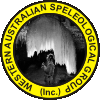
Submission to the Minister for Environment by the
Australian Speleological Federation (Inc)
on the Mt Etna Caves National Park Draft Management Plan 1998
Prepared by:- Rauleigh Webb
Summary of the Submission by the Australian Speleological Federation (Inc)
to the
Minister for Environment regarding the Mt Etna Caves National Park Draft Management Plan 1998
- The Federation cannot endorse the 1998 draft management plan and calls upon the Minister for Environment to request the drafting of a new comprehensive management plan for Mt Etna Caves National Park.
- The Federation recommends that the plan provide mechanisms to develop individual cave management prescriptions, in conjunction with local speleological groups, for identified significant caves within the Mt Etna Caves National Park.
- The Federation recommends that the plan should investigate the current karst hydrology of Mt Etna Caves National Park and ensure that the catchment of karst waters is protected.
- The Federation requests that Bat Cleft tours continue to provide the general public with an excellent, safe, experience and that any required infrastructure does not adversely impact the karst or cave fauna of Mt Etna Caves National Park.
- The Federation recommends that the plan should fully investigate the invertebrate cave fauna of the caves of Mt Etna Caves National Park, especially those that are dependent on the cave bat populations and that cave management prescriptions should be developed to ensure their long term conservation.
- The Federation recommends that the Department of Environment should consider the impact of controlled burns on caves and karst in its fire management plan.
Submission by the Australian Speleological Federation (Inc)
To the Minister for Environment on the Mt Etna Caves National Park
Draft Management Plan 1998
Introduction
What is the ASF?
The Australian Speleological Federation (Inc) (ASF) comprises 27 corporate caving clubs and 20 associate caving clubs distributed throughout Australia. A council, headed by an executive directs it. As well, the Federation has a number of Commissions that oversee Federation activities between meetings of the council and the executive.
The Conservation Commission of the ASF has two Co-Convenors who are located across Australia to liaise with government departments, private landowners, or companies involved with the management of cave and karst resources.
The ASF has provided consulting services relating to cave and karst management to public and private cave managers throughout Australia. They have also assisted many cave managers in the identification of the cave resources with the karst of their reserve, National Park or private land holding. This involves activities such as surveying caves, tagging cave entrances, and performing inventories of features and cave life within the cave.
The Federation has also been involved with four of Australia's most important karst conservation issues. The Mt Etna limestone mine in Queensland (for over 10 years), the Yessabah limestone mine in New South Wales (Keir Vaughn-Taylor 1991), the Lune River Quarry in Tasmania and the Sellicks Hill Quarry Cave (Buswell 1994) blasting and subsequent inquiry. In three of these cases mining has halted at each site and significant attempts have been made to preform restoration (Gillieson 1995) to parts of the quarries. In the case of Sellicks Hill mining of the cave has been halted while the inquiry has been in progress.
MANAGEMENT OF KARST AREAS
Karst is a word that is used by geomorphologists to describe an area or region that comprises a soluble rock type such as limestone. From a management perspective the plan of management for a karst area should integrate all of the management objectives towards the conservation of the karst region. Many of the features with a karst region are highly visible such as pinnacles, dolines or caves. However it is the integrated management of the karst area that protects all of the karst features.
THE OVERALL MT ETNA CAVES NATIONAL PARK PLAN
In responding to your invitation to comment on the draft Mt Etna Caves National Park management plan the Federation can only express its deep concern regarding the extremely short time frame that has been allowed for public comment. This time period gives interested clubs, organisations and individuals no time at all to gather together available information relating to the park in order to comment on the draft plan. As these organisations are generally voluntary in nature your time frame will exclude extensive and constructive comment from most organisations.
The Federation must also indicate the appalling lack of information supplied in the draft management plan. The Federation has commented on many draft management plans relating to karst management in Australia but never one of only four pages in length. The majority of these plans, at least detail the flora and fauna of the park and provide proposals of how they are to be managed to minimise habitat damage. In general this level of detail results in draft plans of 90 pages or more. The four page draft management summary released for Mt Etna Caves National Park is very difficult to comment on without the relevant background detail that is clearly missing from the "draft management plan".
The plan does not appear to provide an overall management strategy for caves although it does have motherhood statements such as "cave systems are maintained as wilderness areas". Management plans for National Parks that specifically relate to caves generally provide a strategy to manage caves as individual resources and therefore develop classification systems or individual cave management prescriptions to ensure the conservation of the features of each cave. These management systems usually require input from local speleological groups, as the members of these groups generally have first hand knowledge relating to individual cave environments. This type of cave management strategy is highly recommended for Mt Etna Caves National Park.
The draft plan contained no references and hence the source and detail that led to the proposed management strategies are unclear.
The IUCN (Watson et al) has developed a set of guidelines to assist karst managers with specialised knowledge relating to karst systems. Some of the guidelines are reproduced here to indicate the emphasis that are placed on karst hydrology and catchment management which are poorly covered in the draft Mt Etna Caves National Park Management Plan
Some IUCN Guidelines
2. The integrity of any karst system depends upon an interactive relationship between land, water and air. Any interference with this relationship is likely to have undesirable impacts, and should be subjected to thorough environmental assessment.
3. Land managers should identify the total catchment area of any karst lands, and be sensitive to the potential impact of any activities within the catchment, even if not on the karst itself.
4. Destructive actions in karst, such as quarrying or dam construction, should be located so as to minimise conflict with other resource or intrinsic values.
5. Pollution of groundwater poses special problems in karst and should always be minimised and monitored. This monitoring should be event-based rather than at merely regular intervals, as it is during storms and floods that most pollutants are transported through the karst system.
- All other human uses of karst areas should be planned to minimise undesirable impacts, and monitored in order to provide information for future decision-making.
11. Where possible, a protected area should include the total catchment area of the karst.
These IUCN guidelines clearly indicate that the hydrology of karst regions is vital to their integrity. The current hydrology of Mt Etna Caves National Park is not mentioned in the draft management plan and a heading without recommendations covers the catchment protection and management section of the plan.
The Federation cannot endorse the 1998 draft management plan and calls upon the Minister for the Environment to request the drafting of a new comprehensive management plan for Mt Etna Caves National Park.
Cave Fauna
The draft management plan recommends animal surveys be conducted to compile comprehensive data for park species. It does not provide for any management strategies to ensure the conservation of cave fauna except for the exclusion of cavers and visitors during known sensitive periods. Visitors are likely to have impacts on cave fauna during every cave visit and a management strategy to conserve cave fauna is required. Many others factors such as pollution, alterations to soil, or the movement of water and air can impact cave fauna as well as human visitors and require consideration with a management plan.
Considerable research has already been undertaken on the bat species that inhabit or use the caves at Mt Etna Caves National Park. However this work needs to be continued and expanded to encompass the entire invertebrate fauna, particularly those species that are dependent on the bat populations.
The Bat Cleft tours are of critical importance to the education and interpretation of the importance of Mt Etna Caves National Park to the general public. Care should be taken to ensure that these tours continue to convey the conservation message of Mt Etna Caves National Park and educate the general public on the significance of Bat Cleft and other sites within the park. The draft Mt Etna Caves National Park management plan indicates that these tours are being modified to ensure visitor safety. It is vital that the quality of the tour is not compromised in this process and that any infrastructure that is put in place does not impact on the cave fauna. Clearly visitor safety has a very high priority but it is hoped that these suggestions may also be taken into account if infrastructure is to be constructed to increase visitor safety.
Permit Systems
Hamilton-Smith 1983 suggests that for a permit system to be justified the following four preconditions should exist.
- A genuine need to reduce and/or place limits upon the use of a resource
- An adequate level of on-site surveillance to ensure the effectiveness of the system
- Other methods, such as voluntary registration, user education, etc are inadequate to achieve management objectives and
- A permit system can be designed in a way which will meet defined management objectives.
In the case of Mt Etna Caves National Park a blanket permit system, especially one that requires a Special Activities Permit, is unlikely to produce a system that ensures the best management strategy for the park.
The Mt Etna Caves National Park draft management plan of April 1993 provided a system of access to caves that vetted cavers requesting access via the Central Queensland Speleological Society (CQSS). Such a system at least ensures that cave visitors are known to have a reasonable level of caving competence before entering caves in the park. The current plan recommends that a set of guidelines is developed to determine if a permit is issued to cavers. The final plan should contain more detail of how the guidelines are to be developed. The Federation recommends that these guidelines are developed with the assistance of members of speleological groups and/or members of the Australasian Cave and Karst Management Association (ACMKA) who have expertise in the development of cave access guidelines.
The 1993 Draft Management Plan
It is unclear if this 1998 draft management plan is based on the 1993 management plan, which contains much more detail than the present plan. The 1993 draft management plan is mentioned under the heading of Plan Implementation and monitoring but it is unclear if it is the 1998 draft plan or the 1993 draft plan that is to be used for implementation.
This should be fully qualified during the preparation of a new detailed draft management plan for Mt Etna Caves National Park.
Fire management
No details of the Fire Management plan were included in the draft Mt Etna Caves National Park management plan however prescribed burns within the park were mentioned. Fire Management plans on karst landscapes do not generally consider the impact of fires on caves and karst features.
One of the major impacts that can occur on caves and karst features is fire. The likely impacts of fire are:-
- the leaching of carbon deposits into caves
- the impacts of smoke and ash on secondary cave deposits and cave fauna
- the degradation of cave entrances through denudation followed by rainfall
- the spalling of limestone throughout the karst (Holland, 1993)
- fracture and collapse due to heating (McGowan, 1990)
Therefore the Federation recommends that the Department of Environment should consider the impact of controlled burns on caves and karst in its fire management plan. Burn prescriptions may require alteration to back burn around sensitive sites or to completely avoid burns in certain areas.
Conclusion
The 1998 draft Mt Etna Caves National Park management plan does not contain enough detail to make informed constructive comment regarding the proposed management proposals for the park.
The Federation strongly recommends that a more detailed draft management plan be written with adequate time for public comment. The employment of experienced cave management consultants to assist with this process is highly recommended.
References
Buswell. C. (1994) Sellicks Hill Quarry Cave. Australian Caver 136: 18-23.
Gillieson. D. (1995). Rehabilitation of the Lune River Quarry, Tasmanian Wilderness World Heritage Area, Australia. Australasian Cave and Karst Management Association Journal. 19: 4-10.
Hamilton-Smith, E.,1983 Permits as a Visitor Control Method, In Hamilton-Smith, E., (ed.) Proceedings of the Fifth Australian Conference on Cave Tourism and Management, Lakes Entrance, pp 31-35
Holland, E. (1993). The Effects of Fire on Soluble Rock Landscapes. Proceedings of the Tenth Australasian Conference on Cave and Karst Management, Rockhampton, Queensland. pp20-23.
McGowan, T. (1990). Fire and The Cave. The Western Caver 30(1): 37-39
Vaughn-Taylor. K. (1991). What happened at Yessabah. Pp 108-113 in S. Brooks (ed.) Cave Leeuwin - Proceedings of the 18th Biennial Conference of the Australian Speleological Federation Inc., Margaret River, Western Australia. 30 December 1990 - 5 January 1991. Australian Speleological Federation, Broadway, New South Wales.
Watson, John, Hamilton-Smith, Elery, Gillieson, David, and Kiernan, Kevin (Eds.), 1997. Guidelines for Cave and Karst Protection, IUCN, Gland, Switzerland and Cambridge, UK. 63pp.

